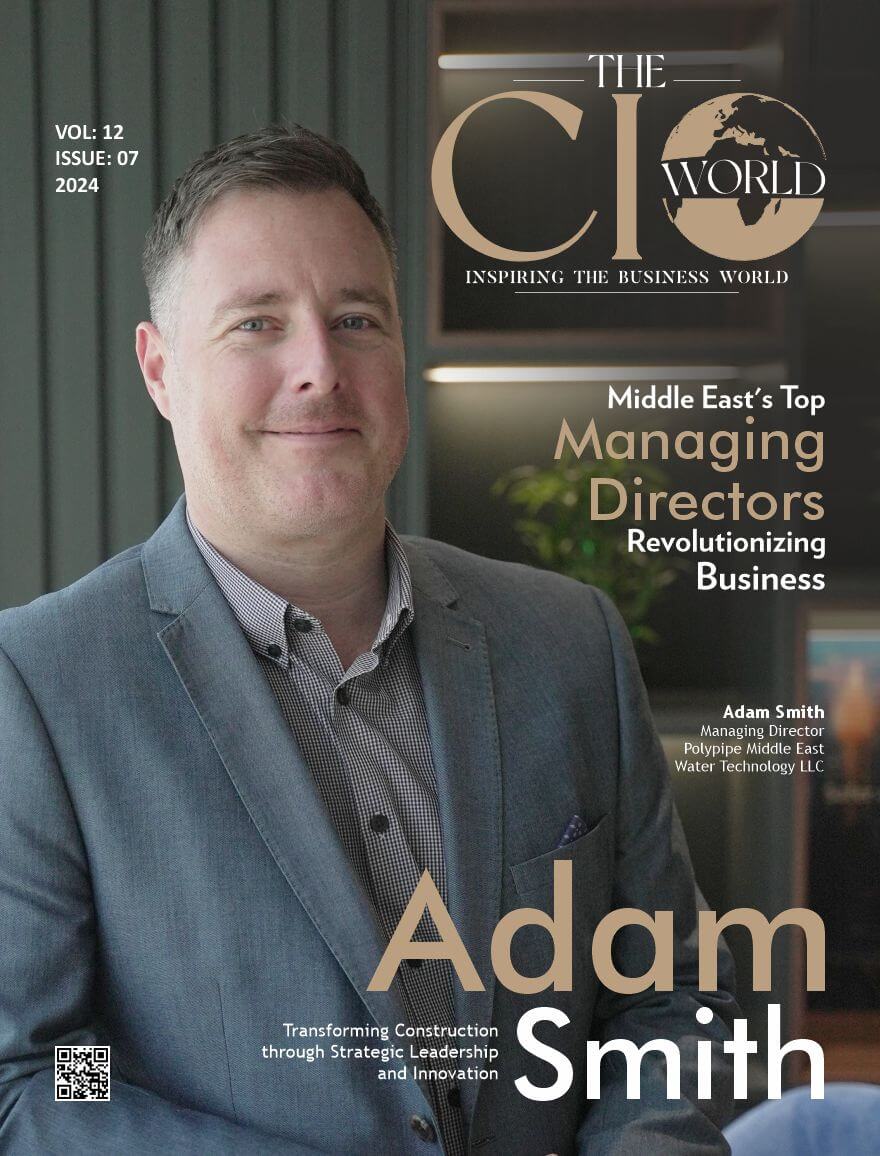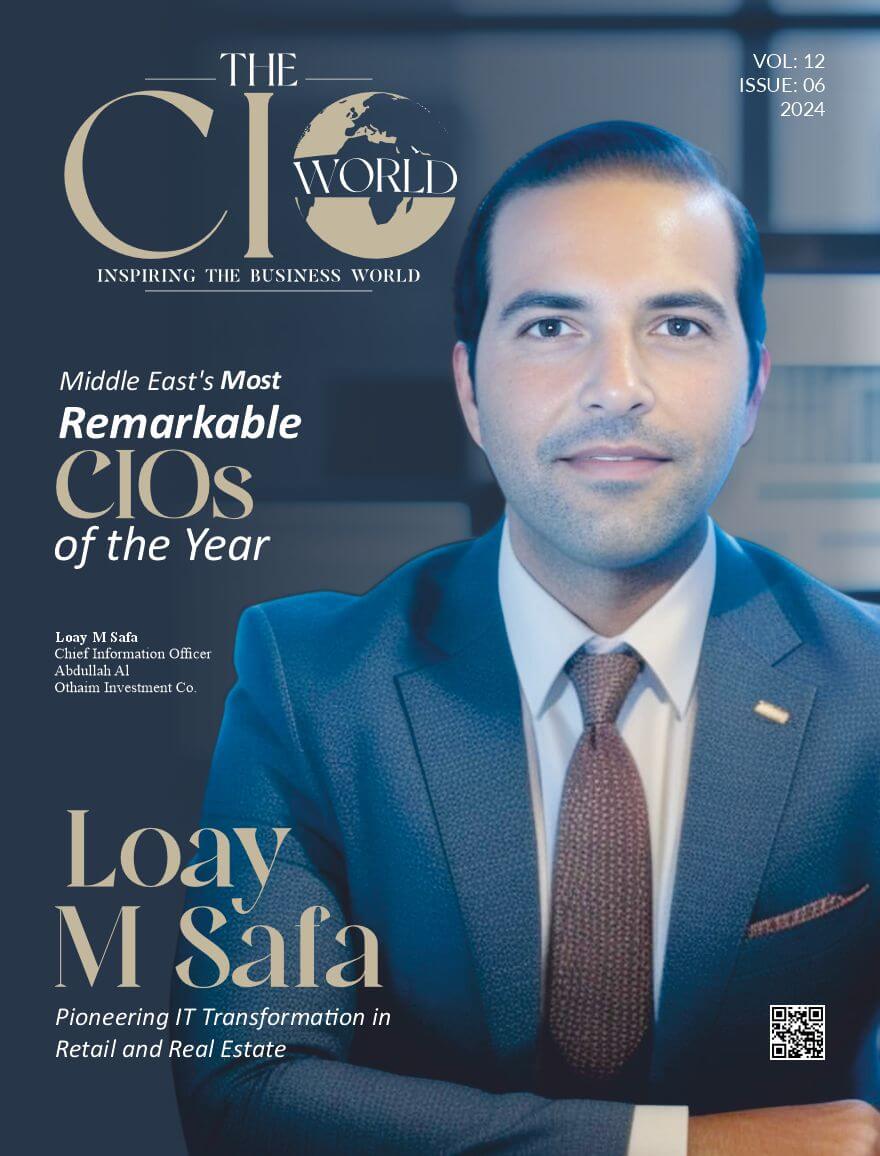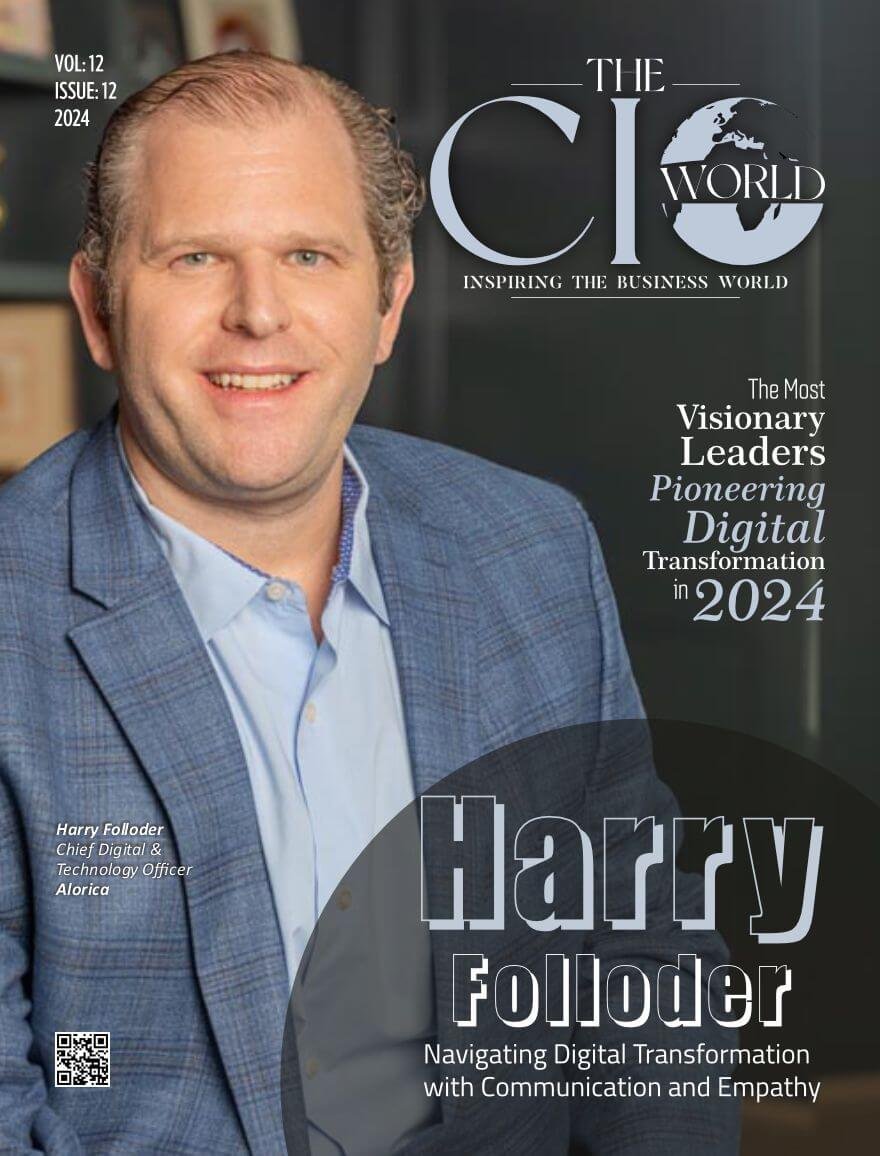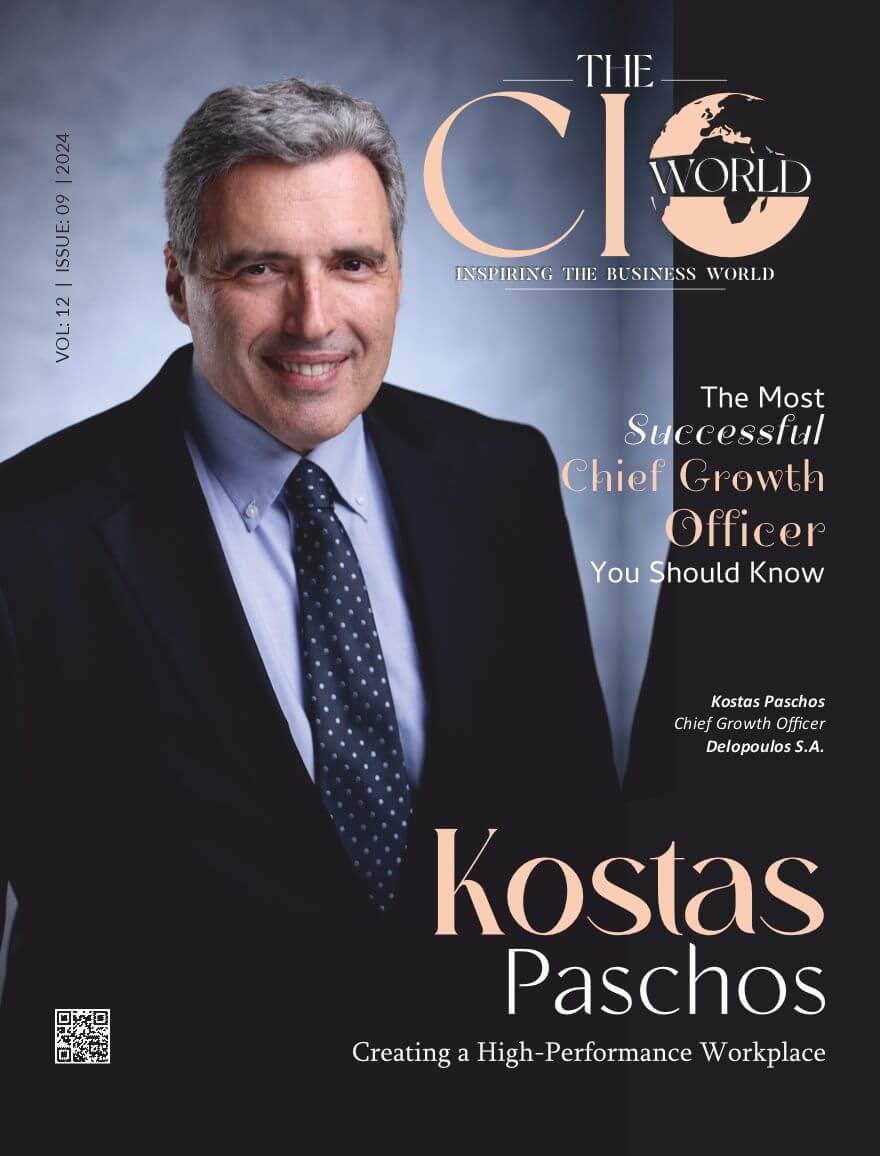Exploring the Evolution of Technology, Business Autonomy, and the Human Resistance to Change!
From the time we were little students, we often daydreamed about what we would become when we grew up. Remember those days when teachers or relatives would ask, “What do you want to be when you grow up?” We all had some picture-perfect ideas in our minds. But here’s a ponderous thought: How often do our initial academic choices shape the course of our professional lives?
For Christopher Kirman, the journey began with an unexpected detour during his university days. “When I was at university, I studied math and economics, and we were forced to take some options. I had no idea what to choose, so I took an option in IT and realized that I would rather pursue a degree in IT than maths,” he reflects.
As he shares his journey, he reflects on his university days, when an unexpected encounter with IT altered the course of his academic pursuit. “I suppose, to me, first of all, my older brother was already in that world. He seemed to love what he was doing, and that was probably one of the things that attracted me to it,” he says. It was a time when technology was emerging as an innovative force, challenging the notion of being just a cost center. Young and intrigued, Christopher found himself drawn to the potential of IT, a decision influenced by familial connections and a spark of curiosity.
With a shift from mathematics to IT, Christopher discovered a realm that resonated with his passion. “It was a bit new, linked to innovation. We were starting to identify that technology could add value to a company,” he reflects. The allure of this dynamic field, coupled with the thrill of being part of something groundbreaking, fueled his desire to pursue a career in IT.
Fast forward to the present, and Christopher stands at the helm of Brittany Ferries as Chief Information Officer. His journey from university choices to leading the IT strategy for a prominent company is a testament to his dedication and the transformative power of embracing the unexpected.
Join us as we explore the convergence of passion, innovation, and leadership in the dynamic world of technology through the lens of his inspiring journey!
Brittany Ferries: A Seafaring Legacy
Brittany Ferries is a company celebrating five decades of operation, that can trace its roots to the visionary initiative of a Brittany-based farmer. Known as “the bulldozer” Alexis Gourvennec embarked on a project to explore a new market for produce grown in the rich fields of Brittany. When approached however, the banks and existing ferry operators did not share his vision. Undeterred – and with the support of fellow-farmers – they decided to go it alone. The farmers chartered a vessel re-named Kerisnel and set sail on the 2 January 1973, the day after the UK joined the EEC.
What commenced as a venture to export vegetables to the UK soon became a passenger-centric enterprise. Today, Brittany Ferries predominantly serves passengers, with an 80% focus on this demographic. The remaining 20% of turnover comes from freight. Notably, the company maintains its unique ownership structure, with the Breton-farming community still at the helm. The distinctiveness of Brittany Ferries lies in its farmers’ altruistic motives, sharing wealth, developing regions and connecting people and businesses across sea borders.
Brittany Ferries stands as a beacon of regional enrichment, with a positive impact in France, England, Ireland, and Spain. The company’s annual transport of two million passengers boosts local economies. The farmers-turned-owners, driven by a commitment beyond profit, contribute to economic equilibrium and navigate a noble course between corporate success and support for the regions in which it operates.
Navigating Business Transformations with Serendipity
Christopher, an accidental entrant into the world of business transformation, found himself immersed in an industry undergoing substantial consolidation. Originally hailing from England, his life took an unexpected turn when he was raised in France. Planning to kickstart his career in England, fate intervened, leading him to France. His initial foray into the realm of transformation occurred when he sought a job in Paris to be closer to his then-girlfriend.
Intriguingly, Christopher’s professional journey unfolded in an unplanned manner. He joined a company as a junior IT manager, a move driven more by personal circumstances than a deliberate career choice. However, Imperial Tobacco happened to be in the midst of a consolidation phase, acquiring various entities that required seamless integration of information systems. This happenstance marked the beginning of his profound involvement in business transformation.
Over a span of 12 years, he played a crucial role in integrating acquired companies into the corporate fold. His expertise in this area did not go unnoticed, and upon leaving his initial post, he discovered that his knack for transformation was highly sought after by other companies. This led to a phase where he found himself spearheading transformations for various organizations.
What distinguishes Christopher’s approach is his affinity for complex business transformations involving multiple companies. Whether it was post-acquisition integration, divestitures, or comprehensive restructuring, Chris thrived in scenarios where several entities were streamlined into a unified whole. His experience extends beyond information systems, encompassing organizational restructuring and change management.
Despite his accidental entry into the world of transformation, his passion for the field is evident. His perspective on information technology is unconventional for a Chief Information Officer (CIO). He doesn’t consider himself an IT enthusiast, expressing the belief that IT, in some cases, needs to be phased out completely. His primary focus is on leveraging IT to enhance company performance, challenging the notion that IT systems can sometimes impede rather than facilitate progress.
Reflecting on his journey, he sees his life as a series of accidents that led him to where he is today. From being raised in France to stumbling into the IT management realm, each twist of fate has shaped his unique perspective on business transformations.
Empowering Business Autonomy
Christopher emphasizes that the notion of IT exclusively adding value is a misconception. In reality, IT often acts as a hindrance, slowing down business processes. His observation stems from the cumbersome nature of involving IT whenever a business unit wishes to innovate—be it creating a new product, service, or pricing model. Each interaction with IT costs a substantial €1,000,000 and consumes a time span of nine months. To address this challenge, he advocates for a shift towards a business environment where autonomy prevails, allowing businesses to operate independently on adaptable platforms.
In his vision for transformation, he stresses the need for standardized solutions over custom ones. The primary goal is to empower businesses by eliminating the intermediary role of the IT team, which not only hampers efficiency but also incurs significant costs. Accelerating time to market becomes a pivotal aspect of this transformation.
The digital evolution of business processes, as Christopher describes it, mirrors the shift from customizable solutions to standardized platforms. Historically, companies, especially in the ’90s and early 2000s, opted for IT solutions tailored to their specific needs. However, the inherent flaw in this approach became apparent as businesses faced hurdles whenever they sought to progress, evolve their processes, or introduce new products and services.
With technological advancements, the landscape has changed. Cloud platforms now offer standardized solutions that are increasingly user-friendly. He highlights examples where businesses operate autonomously on these platforms. The key shift lies in compliance with standard solutions imposed by these platforms, rendering businesses self-sufficient. Unlike the past, where businesses dictated their requirements to IT, today’s approach involves adapting to the features introduced by the platform annually.
These platforms, according to him, continuously innovate by introducing new features. Instead of businesses making requests and waiting for implementation, the paradigm has shifted. Businesses now evaluate the features offered, selecting those that align with their goals and implementing them independently. This approach fosters a more agile and self-reliant business environment.
Ultimately, his vision revolves around liberating businesses from the shackles of dependence on IT for every operational change. The call is for a transformation that embraces standardized solutions, encourages autonomy, and accelerates the pace at which businesses bring their innovations to market. The evolving landscape of technology, particularly the rise of user-friendly platforms, stands as a testament to the feasibility of his vision for a more efficient and self-sufficient business ecosystem.
The Visionary Shift
His vision for the future challenges the conventional wisdom that IT invariably adds value. He advocates for empowering business units to operate autonomously on platforms that seamlessly integrate evolving technologies. In this paradigm, the standalone IT department becomes obsolete, replaced by a more agile and efficient business environment.
The conversation expands to the role of platforms in expediting business processes. Chris highlights a transition from customized solutions to standardized platforms, allowing businesses to be more self-reliant. Integrating business intelligence into these platforms provides users with real-time insights and guidance, fundamentally altering the dynamics of day-to-day operations. While advocating for standardized backend applications, he suggests maintaining a custom front end when interacting with customers. This approach enables a personalized customer experience while benefiting from a standardized backend solution. Furthermore he emphasizes the availability of a team of developers dedicated to customizing and integrating front-end solutions.
The Data Dilemma
As technology advances, the discussion naturally gravitates toward artificial intelligence (AI) and machine learning (ML). Chris underscores the misconception that these innovations can be seamlessly integrated into legacy systems. He emphasizes the need for a lengthy preparatory phase involving the consolidation of clean and accurate data from diverse sources.
The journey toward preparing for AI and ML, he explains, necessitates a focus on data engineering, establishing a single source of truth, and implementing robust data governance. Only with these foundational elements in place can companies effectively explore and deploy advanced technologies.
Addressing the innate resistance to change among individuals, he proposes unconventional strategies. He suggests a preemptive approach where companies simulate the initiation of a digital transformation, creating awareness of impending change. By showcasing the benefits and the future state of operations, this simulated approach helps individuals overcome the initial phase of denial and resistance.
He acknowledges the complexity of human psychology in the face of change. Despite the professed desire for innovation, individuals often exhibit subconscious resistance to the transformations needed for digital evolution. By addressing this resistance early on, companies can pave the way for a smoother and more effective transition.
His journey from mathematics to IT mastery, coupled with his transformative role at Brittany Ferries, offers valuable lessons for leaders navigating the digital landscape. The challenges he identifies, from human resistance to the clash of CTO and CIO roles, mirror the broader struggles in the corporate world. However, his visionary approach and strategic insights provide a roadmap for companies seeking to unlock their full potential in the ever-evolving tech landscape.
He further sheds light on the increasing autonomy of businesses in deploying solutions without extensive reliance on IT support. He emphasizes the immediacy of time to market, enabling companies to swiftly implement changes and innovations without enduring lengthy waits or hefty financial investments. This shift towards autonomy, however, reveals a gap in the efficacy of existing platforms, especially in the CRM domain.
Chris recognizes the ongoing evolution of technology as a catalyst for businesses to become more self-reliant. The envisaged transformation involves businesses liberating themselves from cumbersome, custom-built systems and transitioning towards standardized platforms. These platforms, according to him, boast a user-friendly approach, providing a seamless experience for individuals interacting with the system. The incorporation of dashboards guides users through their daily tasks, offering insights and support as they navigate the platform.
Another crucial aspect he highlights is the significant empowerment of businesses through the integration of data into these platforms. As opposed to the laborious process of extracting, consolidating, and cleaning data in custom-built systems, these platforms inherently embed and integrate data into their framework. This streamlined approach facilitates a more efficient and insightful operational experience for businesses, eliminating the need for manual data handling.
The conversation pivots towards the integration of advanced technologies such as Artificial Intelligence (AI) and Machine Learning (ML). He stresses the prerequisite of a prolonged preparation phase, focusing on the consolidation of clean and accurate data from both internal and external sources. The journey involves establishing a single source of truth, led by data engineers, and robust data governance practices. Only with these foundational elements in place can companies effectively contemplate the integration of AI and ML.
Contrary to a common misconception, he addresses the fallacy of seamlessly plugging AI into legacy systems. He asserts that a protracted preparation period is imperative, urging companies to dedicate considerable time to cleansing their data and establishing a reliable foundation. This candid perspective challenges the notion that AI can effortlessly coexist with outdated systems.
Recognizing the need for guidance in this transformative journey, he proposes the establishment of an independent industrial sector led by Chief Information Officers (CIOs). These CIOs would serve as consultants, assisting companies in navigating the intricate landscape of technology upgrades. He underscores the importance of proactive thinking, as many companies resist change due to a subconscious reluctance deeply rooted in human psychology.
In addressing this resistance, he suggests a unique approach—simulating a digital transformation to create awareness and readiness among stakeholders. By preparing individuals for the impending changes, this strategy aims to smooth the initial phases of denial and resistance, making the subsequent transition more effective.
A Wake-Up Call
In examining the current tech landscape, Christopher underscores a prevalent challenge: the reluctance of leaders to embrace change. He notes a common trend where decision-makers only consider overhauling systems when faced with crises like cyberattacks or system failures. Despite his proactive stance, he recognizes the uphill battle of convincing others to adopt new technologies.
Over the last ten years, technology has undergone a perceptual evolution within companies. Previously deemed necessary but not prestigious, technology’s role has transformed. Chris attributes this shift to extensive marketing efforts, highlighting concepts like data lakes that, in reality, weren’t fully functional. CEOs, in an attempt to stay ahead, invested prematurely in technologies like data lakes, only to be met with disappointment. The turning point, according to him, was the rise of cyber threats, forcing leaders to confront the tangible consequences through headlines of legal action and fines.
To counter this resistance, he employs two strategies. First, he advocates for presenting real-world information, using headlines to demonstrate the serious repercussions of cyber incidents. Second, he urges a truthful evaluation of IT’s role, dispelling the notion that it universally adds value. Chris argues that, in many cases, IT hinders business operations, slowing down processes without substantial benefits. He challenges the prevalent model where IT professionals, driven by personal agendas, make decisions based on what enhances their CVs rather than what is best for the company.
He envisions a future where businesses evolve beyond the need for traditional IT departments. He sees technology as a toolbox, with its tools evolving over time. His perspective challenges the conventional role of IT professionals, suggesting that as technology and digital natives advance, the need for a separate IT function diminishes. In this scenario, business and technology seamlessly merge, eliminating the bottleneck created by intermediary IT roles.
The Honest Conversation
Central to his philosophy is the need for honest conversations. Chris encourages leaders to acknowledge that IT often slows down business processes and adds limited value. By embracing the evolution of technology and digital expertise, companies can streamline operations and reduce reliance on IT professionals, who may not possess in-depth knowledge of specific business areas.
Chris acknowledges that his outspoken approach may not endear him to many CIOs. However, he remains committed to vocalizing what others might prefer to keep behind closed doors. For him, the key to unlocking a company’s full potential lies in challenging outdated structures and fostering a collaborative environment where business and technology coalesce, ultimately paving the way for a more agile and high-performing future.
He observes that the challenges within business operations stem from a lack of innovation, primarily due to a conflict between the technology and information departments. The technology officers are hesitant to embrace innovative ideas from the information officer, who envisions advancements beyond the current timeline.
The information officer focuses on forward-thinking strategies, emphasizing the need to overhaul processes, introduce new equipment, and integrate data flows seamlessly. However, this transformation requires time and faces resistance, leading to a disconnect between the two departments.
Historically, IT was instrumental in automating business operations, akin to a tractor enhancing a farmer’s efficiency. Yet, the real value lies in leveraging information gathered through data to gain insights into the business landscape. While the Chief Technology Officer (CTO) concentrates on the technological aspects, the information officer strives to structure data flows and create a unified data repository.
Extracting data from legacy systems poses a significant challenge, as existing databases are often fragmented and lack a comprehensive view. The information officer’s goal is to consolidate data from internal and external sources into a singular, accurate representation—be it a data lake or another centralized platform.
New technologies, by design, integrate business intelligence, offering real-time insights into performance and tasks. This contrasts with the traditional approach, where individuals had to manually ensure they hadn’t missed anything in their workflow. The new platforms provide a systematic overview, aiding individuals in understanding their performance and highlighting areas that require attention.
The integration of business intelligence into these platforms streamlines operations for various roles, such as accountants, by offering insights and facilitating better decision-making. Unlike the fragmented databases of the past, modern platforms simplify the integration of data into centralized repositories, reducing the risk of incomplete or inaccurate information.
Christopher emphasizes that to outperform competitors, businesses must embrace the power of information. Drawing from his experience in the tobacco industry’s consolidation sector for over 12 years, he underscores the significance of leveraging insights for informed decision-making in today’s dynamic business landscape.







